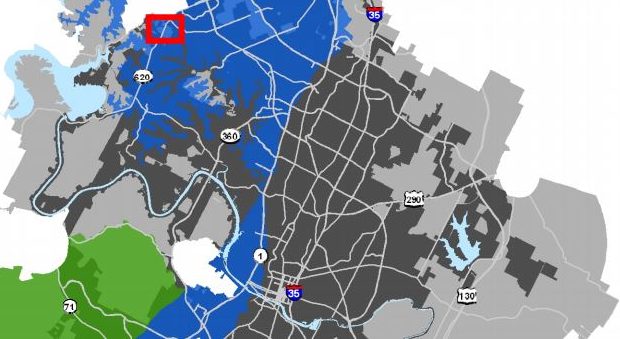Broadstone 620 development limited by environmental risks
Monday, November 21, 2016 by
Cate Malek There are some limits to Austin’s breakneck expansion, and the developers of Broadstone 620 may have stumbled into them on Nov. 16.
Austin’s Environmental Commission voted 7-2 not to recommend building a new wastewater system for the development because it would intensify development in an environmentally sensitive area. Commissioners Hank Smith and Richard Grayum were opposed, and Commissioner Michael Moya was absent.
“This is not in an area where the city is encouraging development,” said Kelly Gagnon, a senior analyst for the city’s Watershed Protection Department.
If Broadstone 620 goes forward, it will bring 336 condos to the northwestern edge of Austin, just outside the city limits near Lake Travis. Although there is already a wastewater system in the area, developers were hoping that the city would extend the current system, which would facilitate increased development in the area.
The Environmental Commission recognized that upgrading the wastewater system for the site, which is located at 11205 North FM 620, would have some benefits for the environment. But it decided that any positive impacts the project could have would be heavily outweighed by the possible damage incurred by opening the area for development.
The 25-acre site is located in a drinking water protection zone at the headwaters of Bull Creek, in a recharge area for the Northern Edwards Aquifer. It is also upstream from a habitat for the Jollyville salamander, a threatened species, and includes several springs and wetlands.
Intensified development in the area would lead to increased impervious cover – asphalt, concrete and other pavement that would affect the health of nearby waterways. One effect the development could have is increased sediment that could block off key tributaries. Although there is no way to know whether this would happen for sure, commissioners acknowledged it was a risk.
“There was a similar development at a headwaters, and they killed that tributary,” said Chuck Lesniak, from the Watershed Protection Department. “They put about 3 feet of sediment in it.”
Two commissioners supported expansion of the wastewater system. Grayum said he didn’t see any other way forward for the development.
“It seems like we’ve put this into a purgatory where we’re not going to serve this property maybe ever because of the environmental concerns,” he said.
But the majority of commissioners saw supporting development in the area as too risky. One other major concern was that because the development would be outside city limits, it wouldn’t be regulated by the same environmental restrictions as other Austin developments, city staff said. Their concern was that even if developers promise to follow environmental regulations, there is no way for the city to hold them to their promises.
“It essentially would be unenforceable,” Lesniak said.
The Austin Monitor’s work is made possible by donations from the community. Though our reporting covers donors from time to time, we are careful to keep business and editorial efforts separate while maintaining transparency. A complete list of donors is available here, and our code of ethics is explained here.
You're a community leader
And we’re honored you look to us for serious, in-depth news. You know a strong community needs local and dedicated watchdog reporting. We’re here for you and that won’t change. Now will you take the powerful next step and support our nonprofit news organization?









